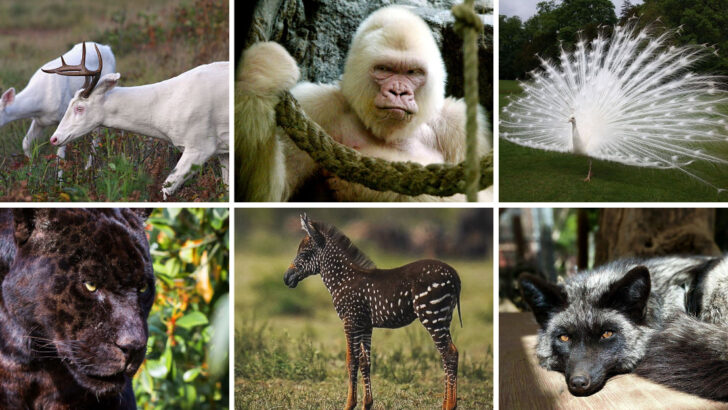Prepare to be amazed. The animal kingdom holds some of the most jaw-dropping creatures, but nothing quite compares to the beauty of albino and melanistic animals. These rare variations seem almost magical, like they’ve stepped out of a different world.
Imagine a jet-black panther moving silently through the night or an all-white Bengal tiger stalking through the grass. These animals aren’t just extraordinary—they’re a reminder of how stunning nature can be when it’s altered by the rarest of genetic quirks.
From the depths of the oceans to the highest mountain ranges, these creatures challenge our understanding of the animal world. They’re not just beautiful—they’re living proof of the incredible diversity that exists in nature.
So, get ready to meet the rarest of the rare. You won’t believe your eyes when you see these astonishing albino and melanistic animals!
Albino Bengal Tiger
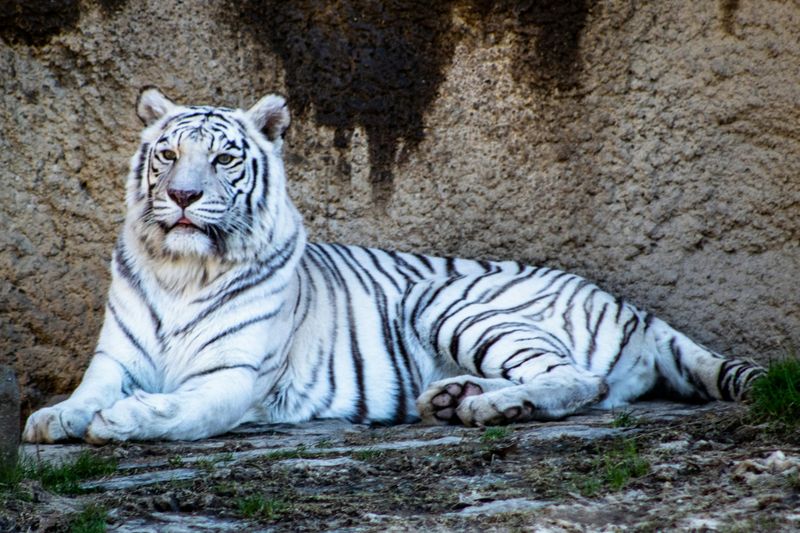
The albino Bengal tiger is a rare and captivating sight in the animal kingdom. This majestic creature is devoid of the typical orange pigment and instead boasts a pure white coat, a result of a genetic mutation affecting pigmentation. Blue eyes and pink noses add to their ethereal appearance.
Found primarily in India, these tigers face threats due to habitat loss and poaching. Conservation efforts are crucial to protecting their dwindling population. Their striking appearance makes them a popular subject in zoos and wildlife reserves, where they contribute to educational programs.
Their presence highlights the importance of genetic diversity in maintaining healthy ecosystems.
Melanistic Jaguar
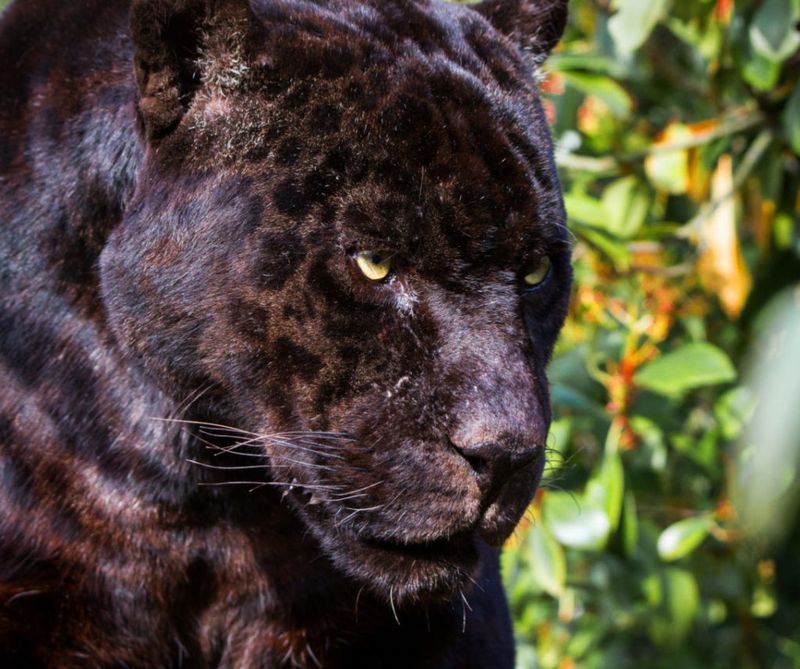
The melanistic jaguar, often referred to as a black panther, is a stunning example of melanism in the wild. Unlike typical jaguars, these animals have an excess of dark pigment, resulting in their deep black coats. Despite their dark appearance, their characteristic rosettes are still visible upon closer inspection.
These elusive predators inhabit the rainforests of South and Central America, where their dark coats provide excellent camouflage in the dense foliage.
This adaptation aids in hunting and avoiding detection by prey and competitors. Melanistic jaguars symbolize the mystery and beauty of the animal world, captivating wildlife enthusiasts globally.
Albino Peacock
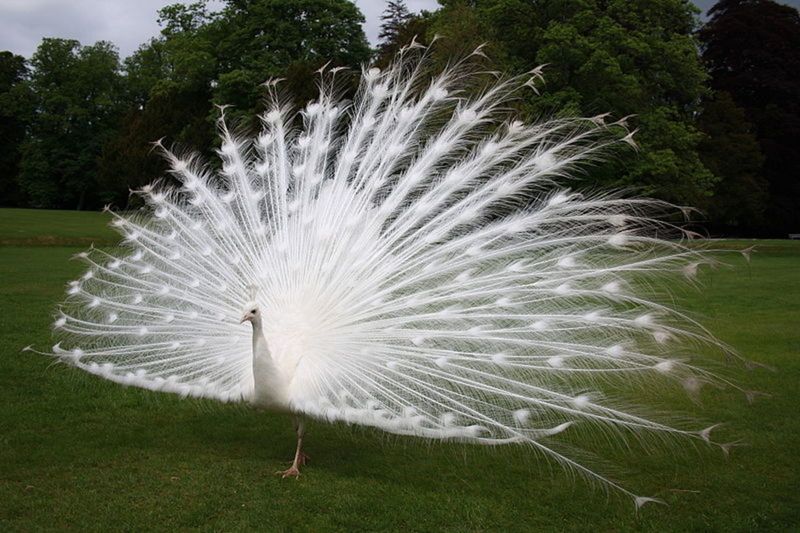
The albino peacock presents a spectacle of beauty with its all-white feathers forming an enchanting fan display. Unlike their vibrantly colored counterparts, albino peacocks lack any pigment, resulting in their strikingly pale appearance.
Known for their elegant courtship displays, these birds are often found in zoos and aviaries worldwide. The absence of color does not detract from their allure; rather, it enhances the ethereal quality of their presentation.
Conservation of these birds helps maintain biodiversity and encourages understanding of genetic variations in avian species. Albino peacocks remind us of nature’s diverse and captivating artistry.
Melanistic Red Fox
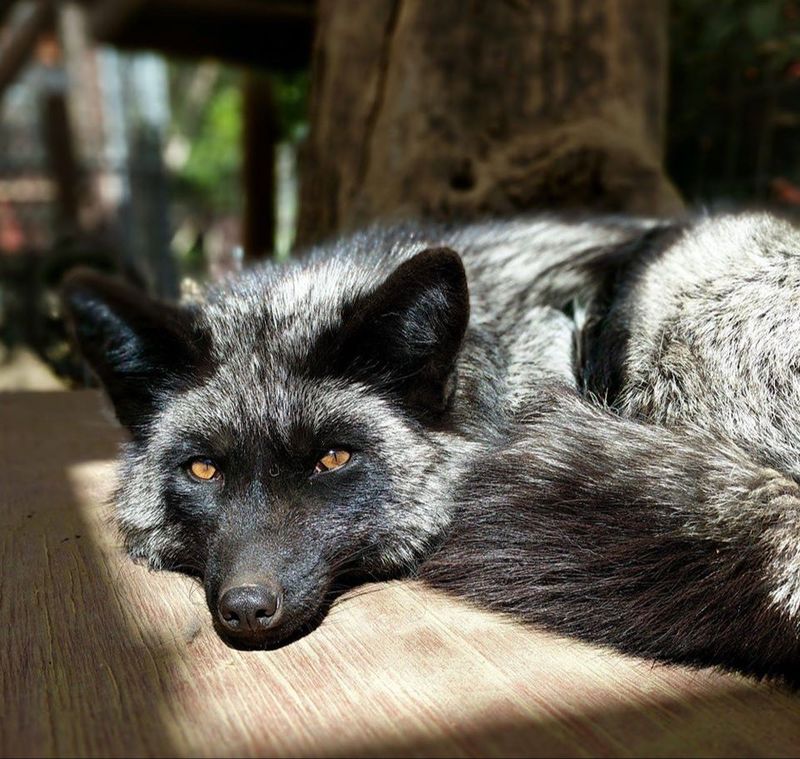
The melanistic red fox is a rare and fascinating variation of the common red fox. Its dark, nearly black fur is a result of increased melanin production, giving it a unique and striking appearance. This rare coloration can sometimes be seen in the wild, particularly in North America and Europe.
The dark fur provides a distinct advantage in certain environments where it aids in camouflage, especially in forested areas during winter.
While sightings are infrequent, the melanistic red fox is a reminder of the genetic diversity present in nature. Their presence captivates those lucky enough to encounter them.
Albino Alligator
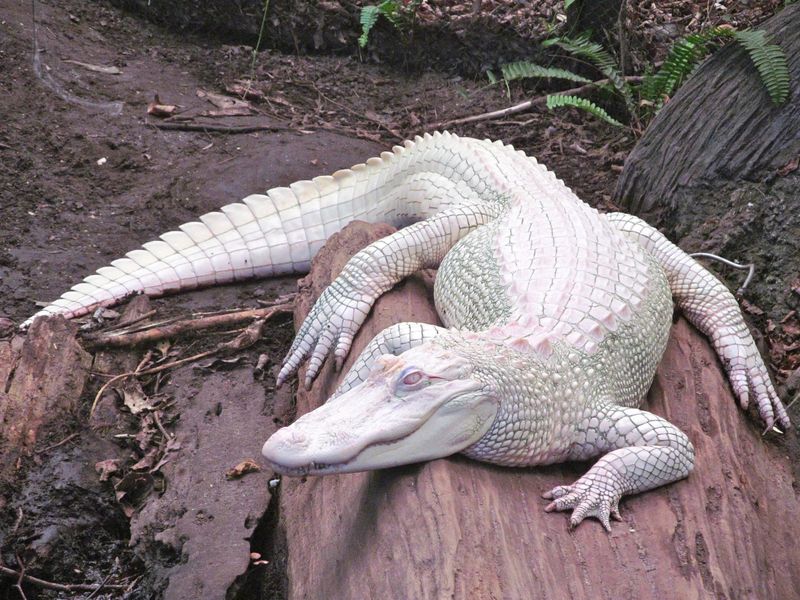
The albino alligator is an intriguing anomaly within the reptile world. With its ghostly white skin and red eyes, this creature embodies an almost mythical presence. Albino alligators lack the pigment melanin, which results in their pale appearance.
Found primarily in captivity due to their vulnerability in the wild, these alligators are susceptible to sunburn and predation without their natural camouflage.
Their unique appearance makes them a popular attraction in zoos and aquariums. Conservation efforts aim to protect these rare creatures and ensure their survival for future generations to appreciate and study.
Melanistic Zebra
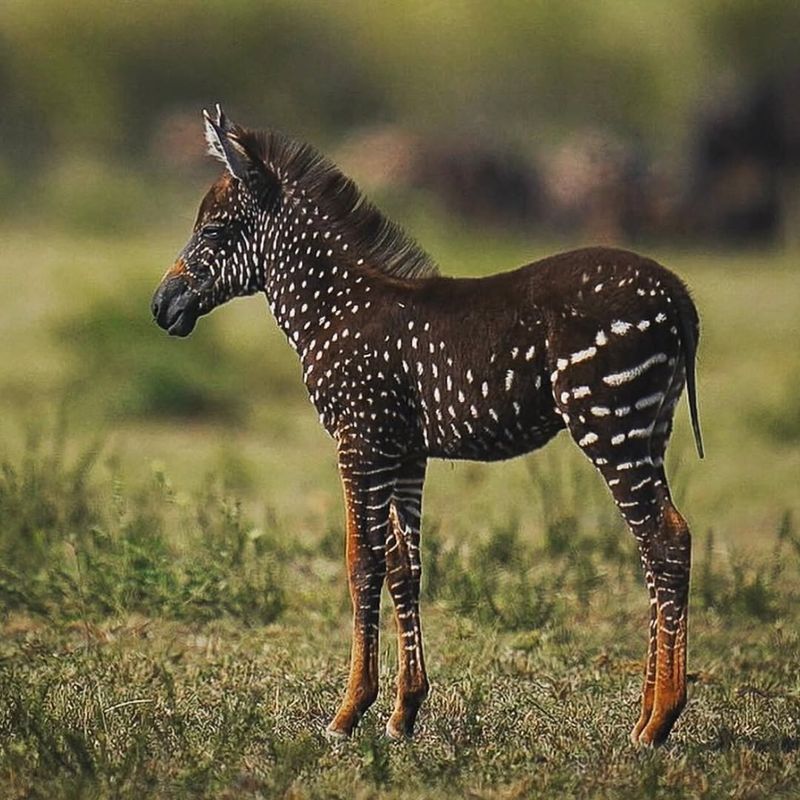
The melanistic zebra stands out among its peers with its predominantly black coat, a striking contrast to the typical black and white striping. This rare color variation results from an excess of dark pigment, known as melanism.
While most zebras are recognizable by their distinctive stripes, the melanistic zebra’s unique appearance can occasionally be spotted in the wild plains of Africa.
This coloration may aid in thermoregulation or offer some level of camouflage. The melanistic zebra is a testament to the incredible variety of genetic adaptations found within species, showcasing nature’s unpredictability.
Albino Kangaroo
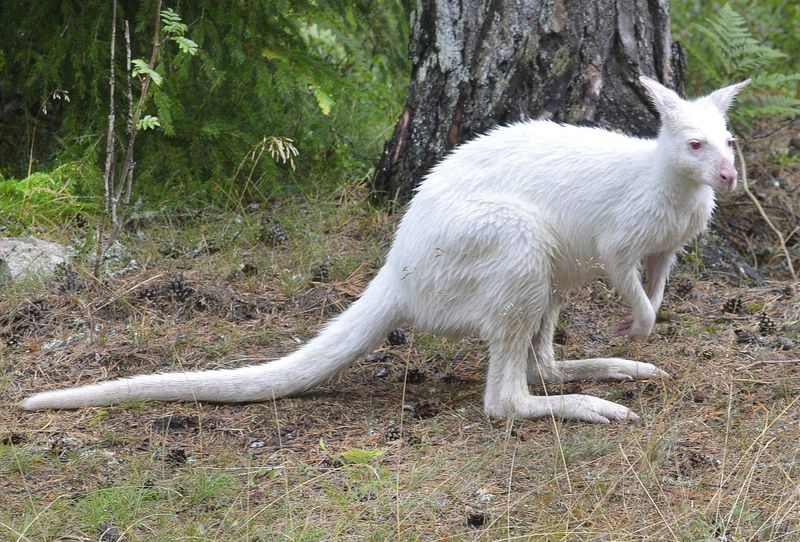
Albino kangaroos are a rare spectacle in the wild, their pure white fur starkly contrasting the typical grey or reddish-brown coats seen in most kangaroos. This lack of pigment is due to a genetic mutation that inhibits melanin production.
Found primarily in Australia, these kangaroos are vulnerable to predators due to their inability to blend into their surroundings.
Despite their rarity, sightings of albino kangaroos draw significant attention from wildlife enthusiasts and researchers. Conservation efforts aim to ensure the survival of these unique animals, highlighting the importance of genetic diversity in nature.
Melanistic Squirrel
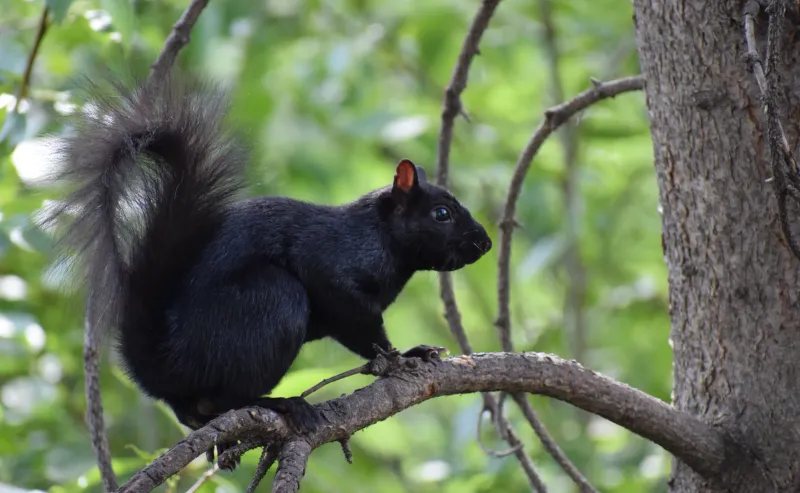
Melanistic squirrels are a rare variant of the common squirrel, characterized by their dark, almost black fur. This unusual coloration is caused by a genetic mutation that results in an excess of melanin, the pigment responsible for coloration in animals.
These squirrels are mostly found in North American and European forests, where their dark coats offer a unique form of camouflage.
While they share the same playful and agile nature as their lighter-colored counterparts, melanistic squirrels add an extra layer of intrigue to the diverse world of wildlife. Their presence is a testament to nature’s genetic diversity.
Albino Python
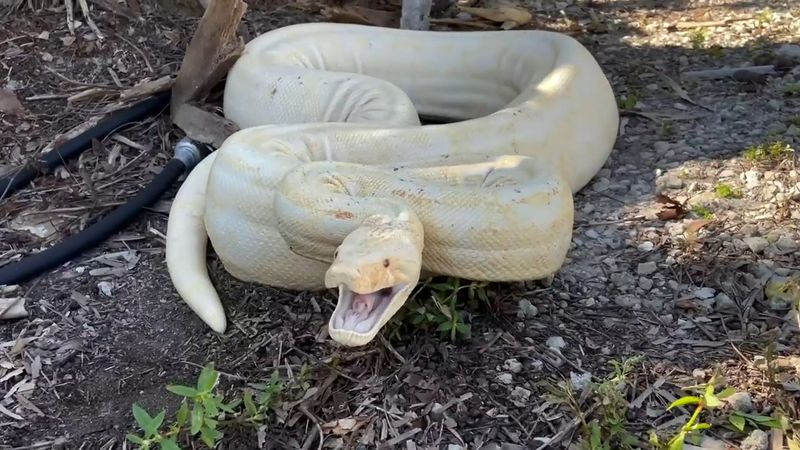
Albino pythons are a captivating example of nature’s genetic anomalies. Lacking the dark pigments typical of pythons, these snakes boast a striking combination of white and yellow scales. This coloration results from a genetic mutation affecting melanin production.
Often found in captivity, albino pythons are popular in the exotic pet trade due to their unique appearance.
In the wild, their lack of camouflage makes survival challenging, increasing their vulnerability to predators. Conservation efforts focus on protecting their habitats and educating the public about the importance of genetic diversity among snake species.
Melanistic Leopard
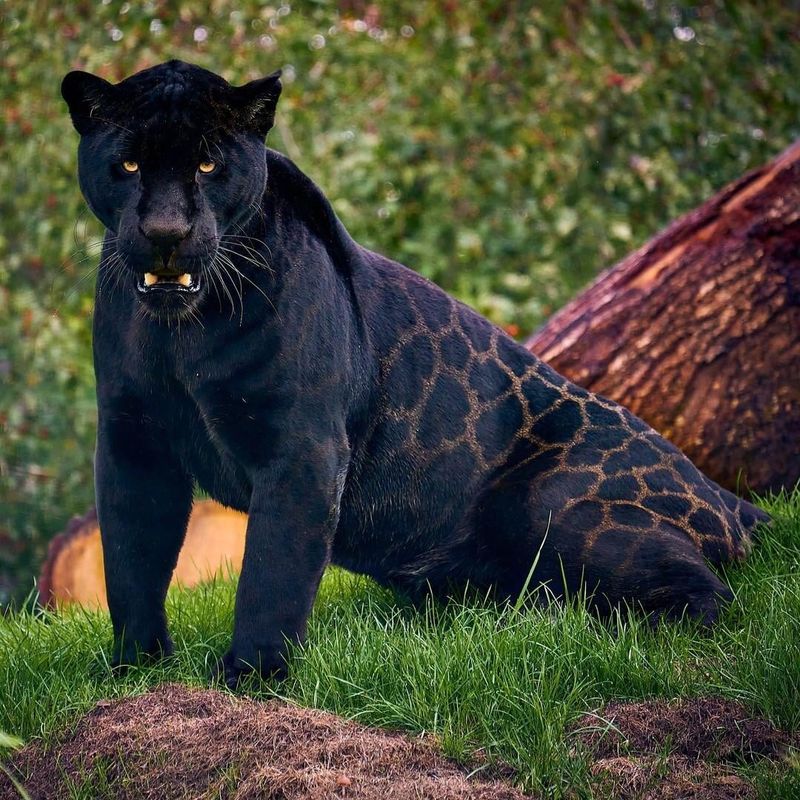
Known as the black panther, the melanistic leopard is a captivating predator that embodies the mystery of the wild. This condition, caused by an excess of melanin, results in a strikingly dark coat.
The melanistic leopard’s rosettes are still visible but are hidden within the richness of their coat. Found in African and Asian regions, these leopards leverage their coloration for stealth, enhancing their hunting prowess.
The allure of the melanistic leopard captivates wildlife enthusiasts, symbolizing strength and adaptability. Efforts to conserve their habitat are crucial to ensure their continued survival in the wild.
Albino Gorilla
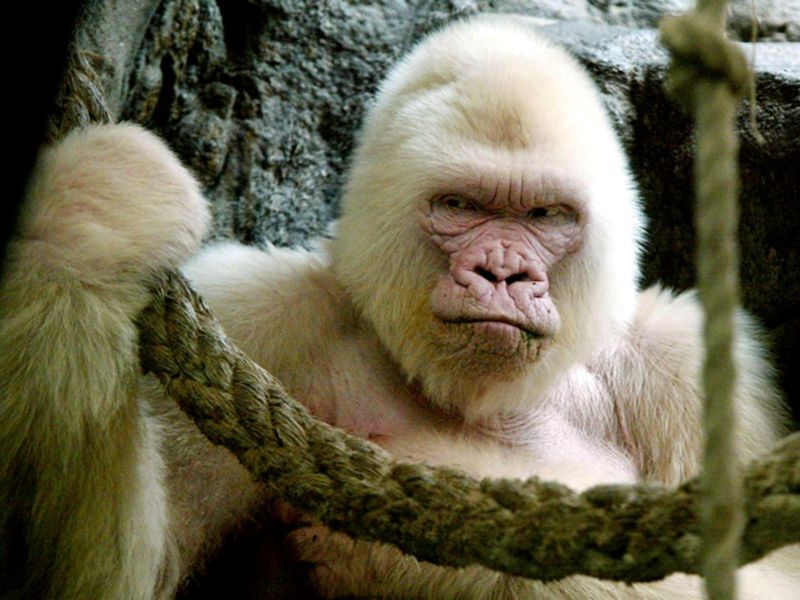
The albino gorilla is an extraordinary sight in the primate world. Its white fur and pink skin result from a genetic mutation that inhibits melanin production, giving it an almost mythical presence.
Found in the wilds of Africa, albino gorillas are incredibly rare, with very few documented cases. Their lack of natural camouflage makes them more vulnerable to predators and other environmental threats.
Conservation efforts focus on protecting their habitats and ensuring their survival for future generations. The albino gorilla serves as a reminder of the delicate balance of nature and the diversity of life.
Melanistic King Penguin
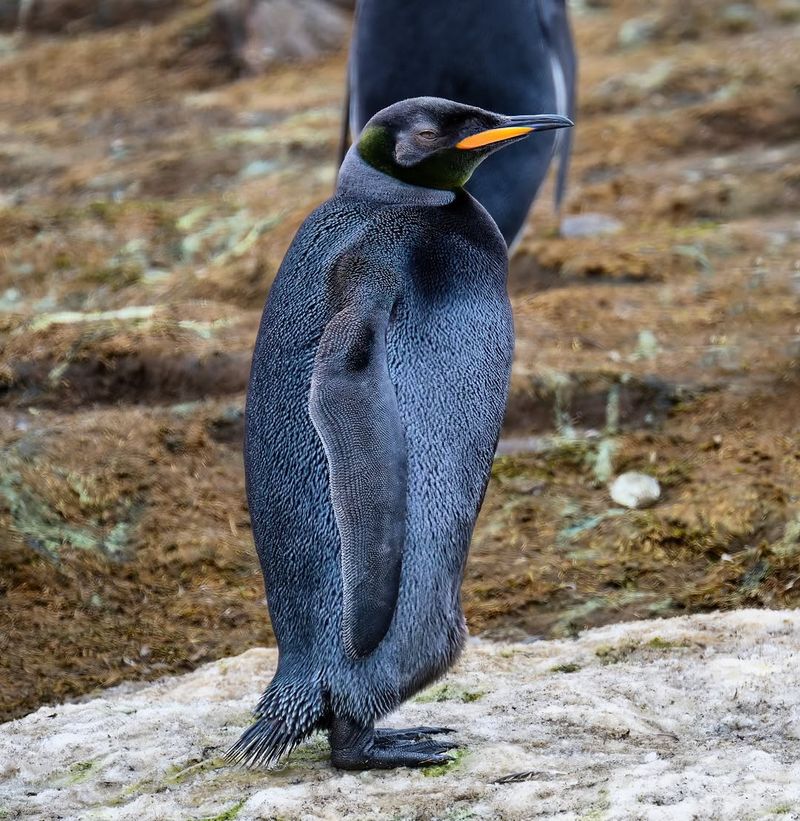
The melanistic king penguin is a rare and striking variation of the typical king penguin. This condition, characterized by a surplus of melanin, results in an intensely dark plumage that contrasts sharply with the icy Antarctic landscape.
These penguins stand out among their peers but face no significant disadvantage due to their coloration.
Found primarily in sub-Antarctic regions, their unique appearance draws attention from researchers and wildlife enthusiasts. Efforts to study and conserve the habitat of these penguins are essential for understanding the genetic diversity and ecological dynamics of polar regions.
Albino Koala
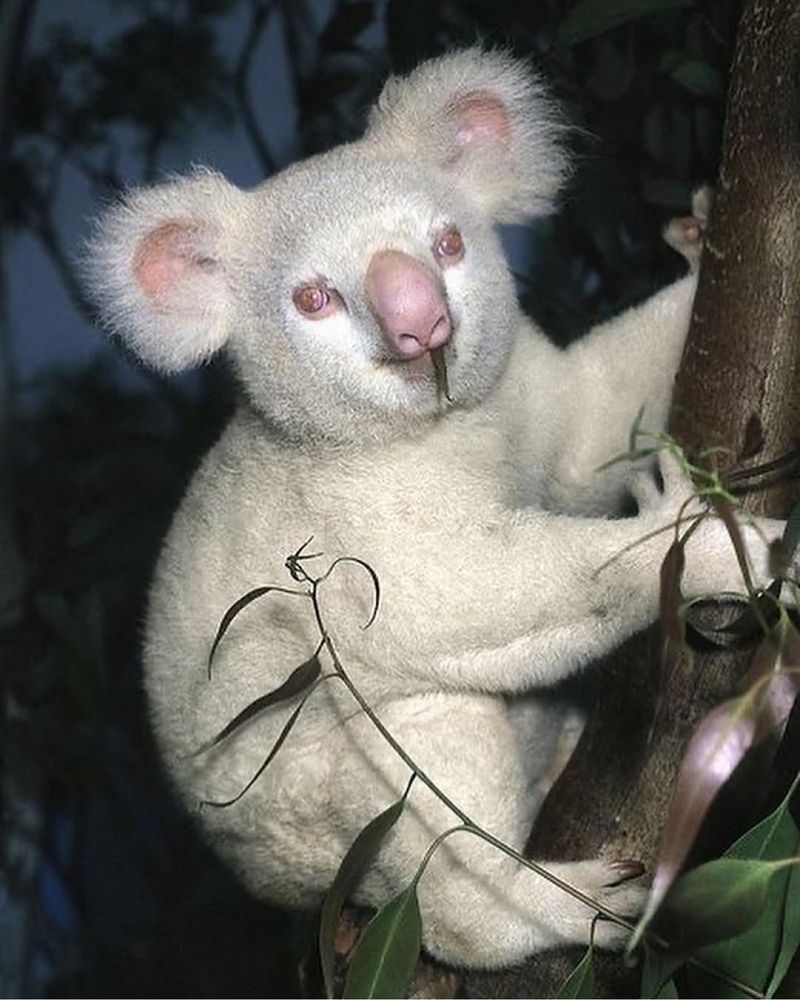
The albino koala, with its snow-white fur and pink eyes, is a rare spectacle in the eucalyptus forests of Australia. This unique coloration is the result of a genetic condition that prevents melanin production.
While typical koalas blend seamlessly into their surroundings, albino koalas stand out, making them more susceptible to predators.
Conservation efforts are crucial to protect these rare individuals and their habitat. The albino koala captures the imagination of animal lovers worldwide, symbolizing the beauty and fragility of nature’s genetic variations. They remind us of the importance of preserving our natural world.
Melanistic Serval
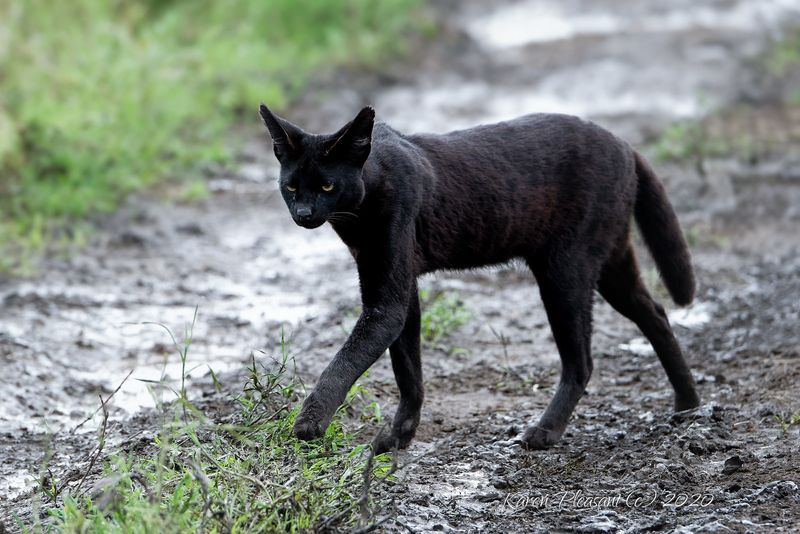
The melanistic serval is a rare and captivating sight in the African savannah. Its dark, almost black coat is the result of an excess of melanin, providing a stark contrast to the typical golden and black spots of regular servals.
This coloration offers advantages in certain environments, aiding in camouflage and hunting.
Found in parts of East Africa, the melanistic serval’s elusive nature makes it a fascinating subject for wildlife enthusiasts and researchers. Their presence highlights the genetic diversity and adaptability of species to different ecological niches, contributing to the rich tapestry of wildlife.
Albino Hummingbird
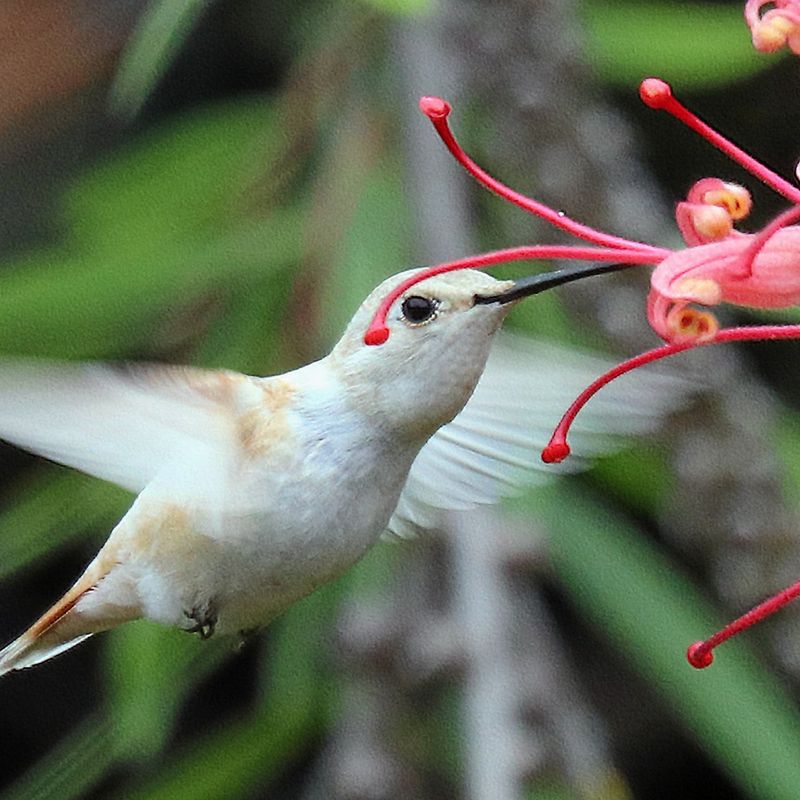
The albino hummingbird is a rare treasure among bird watchers, its all-white plumage a stunning deviation from the usual vibrant colors found in hummingbird species. This unique appearance is due to a genetic mutation affecting pigment production.
Albino hummingbirds face challenges in the wild, as their lack of camouflage makes them more visible to predators. However, their striking beauty captivates those fortunate enough to witness them.
Conservation efforts aim to protect their habitats, ensuring these rare birds continue to enchant future generations. Their presence in the wild symbolizes the wonder and diversity of avian life.
Albino Raccoon
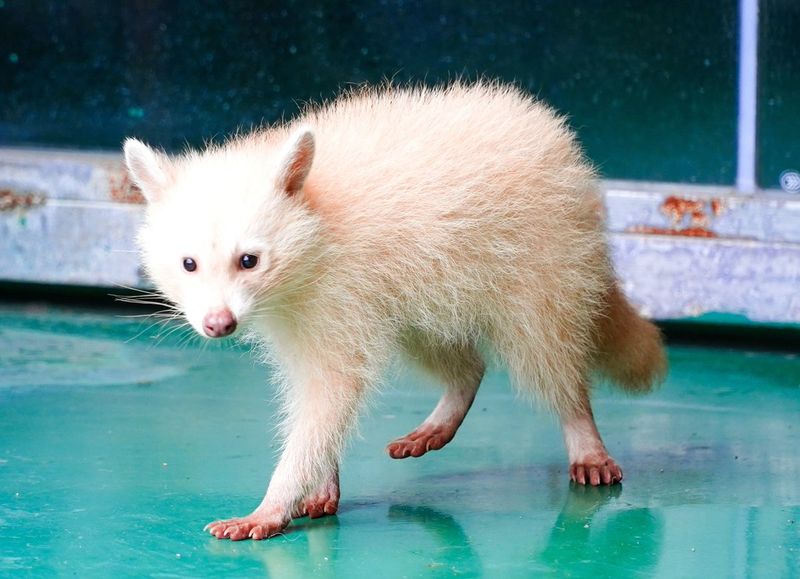
The albino raccoon is a rare and intriguing variation of the common raccoon, characterized by its white fur and pink eyes due to a lack of melanin. This genetic mutation sets them apart from their typically masked relatives.
Found occasionally in North America, albino raccoons are more vulnerable to predators and environmental hazards without their natural camouflage.
Their unique appearance often draws attention from wildlife enthusiasts and researchers. Conservation efforts focus on protecting their habitats and promoting understanding of genetic diversity within species. Albino raccoons remind us of nature’s unpredictability and the marvels of animal adaptation.
Melanistic Viper
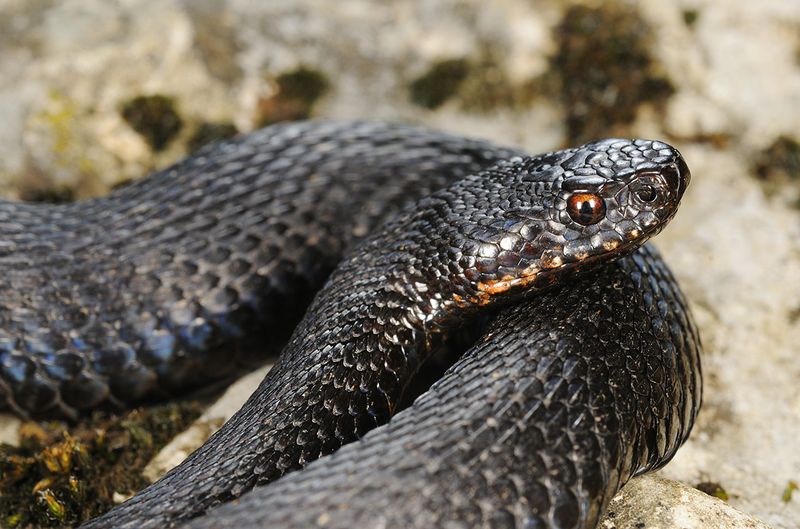
The melanistic viper is a fascinating example of nature’s capacity for variation. Its deep black scales, caused by an overproduction of melanin, distinguish it from typical viper species.
Found in various habitats, including rocky terrains and forests, these vipers use their dark coloration for effective camouflage, enhancing their hunting capabilities.
The melanistic viper’s unique appearance makes it a subject of study for herpetologists and wildlife enthusiasts alike. Efforts to conserve their natural habitats are crucial for maintaining biodiversity and understanding the ecological role of these predators in their ecosystems.
Albino Hedgehog
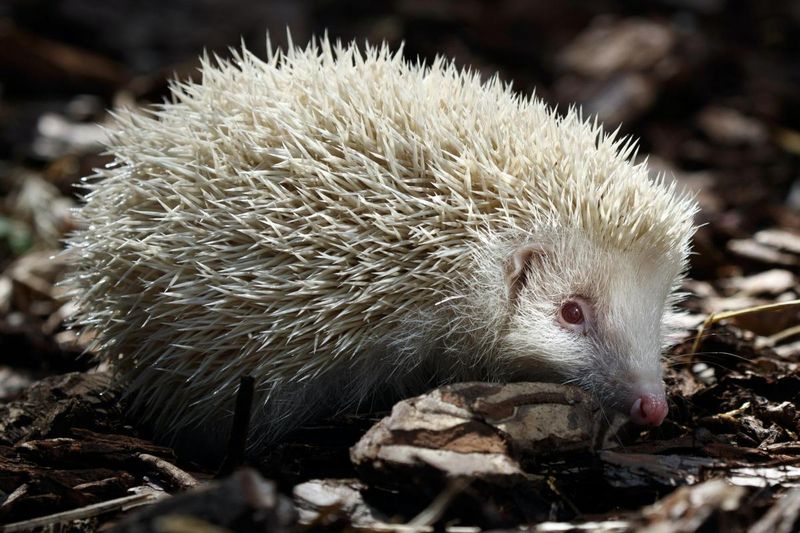
The albino hedgehog is a charming anomaly within the animal kingdom, distinguished by its white spines and pink eyes. This lack of pigment results from a genetic mutation affecting melanin production.
Found occasionally in European woodlands and gardens, albino hedgehogs face challenges due to their visibility to predators.
Despite this, they thrive in captivity, where they are often kept as exotic pets. Conservation efforts focus on habitat protection and raising awareness about genetic diversity. Albino hedgehogs captivate the imagination of those who encounter them, symbolizing the wonders of nature’s genetic variations.
Melanistic Lynx
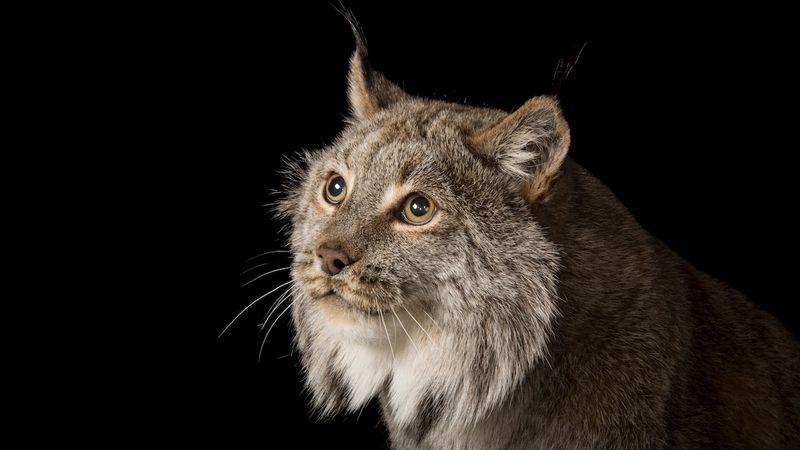
The melanistic lynx is a rare and captivating sight in the wild, characterized by its deep dark coat, the result of a genetic mutation causing an overproduction of melanin. This unique coloration offers advantages in certain environments, aiding in camouflage and hunting during snowy winters.
Found in parts of Europe and North America, the melanistic lynx’s elusive nature makes it a subject of fascination for wildlife enthusiasts and researchers.
Efforts to conserve their habitats are essential to ensure their survival, highlighting the importance of understanding the biodiversity and adaptability of species in various ecosystems.
Albino Deer

Albino deer are a rare and striking sight, their pure white coats a stark contrast to the usual brown hues of their species. This lack of pigment is due to a genetic mutation affecting melanin production.
Found occasionally in North American forests, albino deer are highly visible to predators, making survival challenging.
Their unique appearance often draws attention from wildlife enthusiasts and photographers. Conservation efforts focus on protecting their habitats and promoting awareness of genetic diversity. The albino deer captures the imagination, symbolizing the beauty and unpredictability of nature’s genetic variations.
Melanistic Owlet
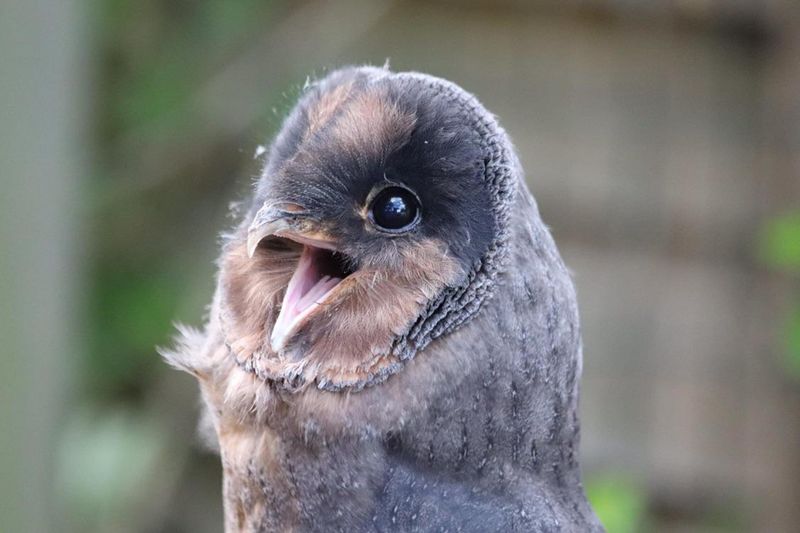
The melanistic owlet is an enchanting example of nature’s genetic diversity, characterized by its deep dark plumage due to an excess of melanin. This coloration provides excellent camouflage during nighttime hunting in forested environments.
Found in various regions, the melanistic owlet’s elusive nature captivates bird watchers and researchers alike.
Efforts to study and conserve their habitats are crucial for understanding their ecological role and ensuring their continued survival. The presence of melanistic owlets highlights the adaptability and diversity of avian species, contributing to the rich tapestry of bird life.
Albino Dolphin
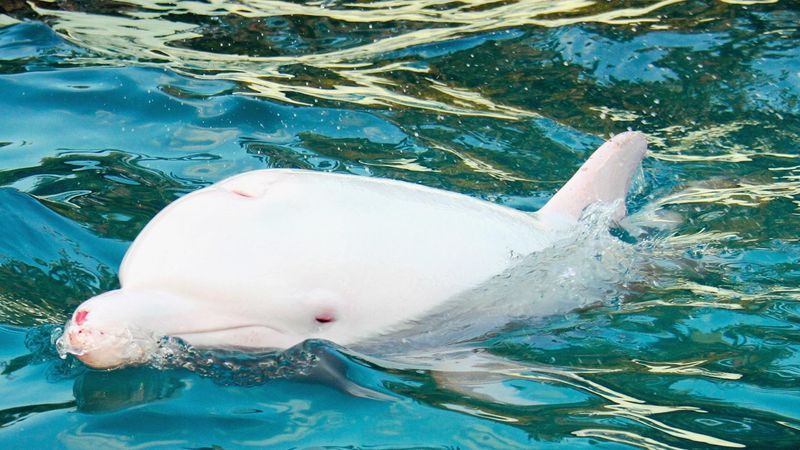
The albino dolphin is an incredibly rare and mesmerizing sight in the ocean, its pure white skin and pink eyes resulting from a lack of melanin due to a genetic mutation.
Found occasionally in various oceanic regions, these dolphins are susceptible to sunburn and predators, making their survival in the wild challenging.
Despite these challenges, albino dolphins capture the fascination of marine biologists and wildlife enthusiasts. Conservation efforts are vital to protect their habitats and ensure the survival of these unique creatures, symbolizing the beauty and fragility of marine life’s genetic variations.
Melanistic Rabbit
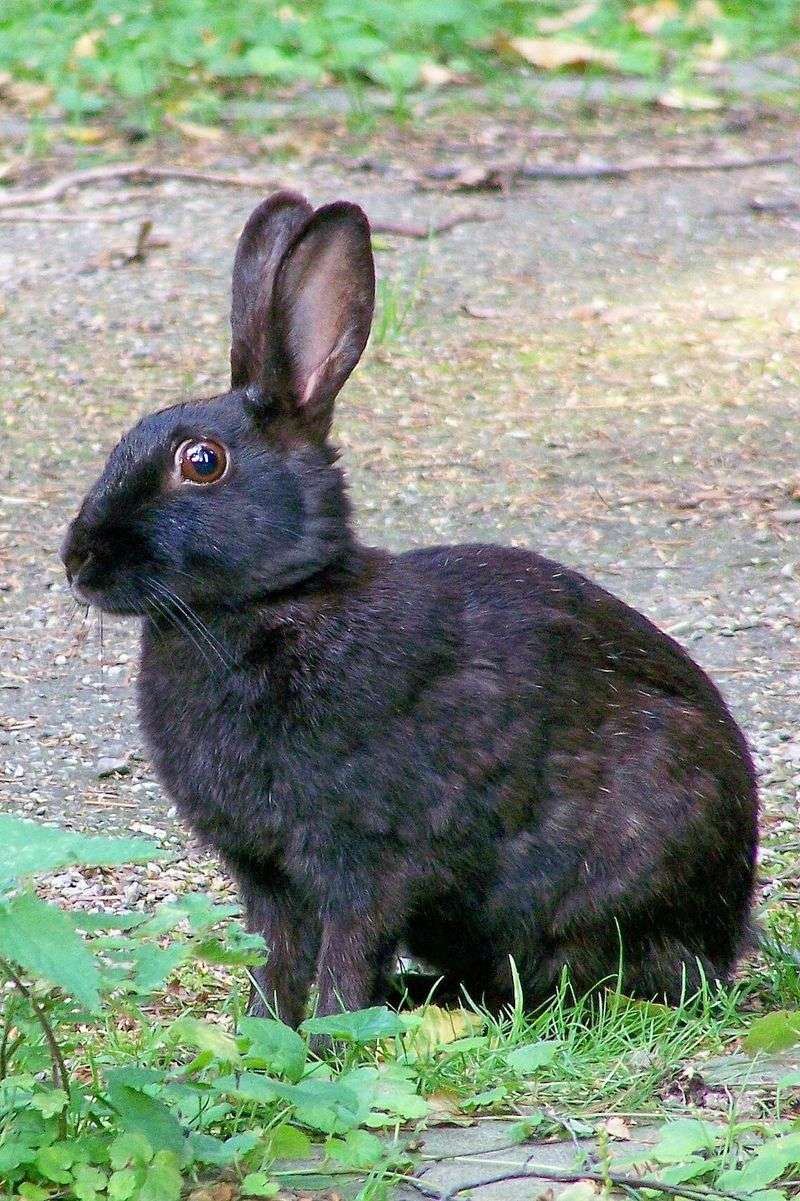
The melanistic rabbit is a rare and captivating variation of the common rabbit, distinguished by its deep black fur caused by an overproduction of melanin. This unique coloration offers advantages in certain environments, providing effective camouflage against predators.
Found in various regions, melanistic rabbits add intrigue to the wildlife landscape, drawing attention from researchers and nature enthusiasts.
Efforts to conserve their habitats and understand their ecological roles are crucial for maintaining biodiversity. The presence of melanistic rabbits highlights the adaptability and genetic diversity of species, contributing to the richness of the animal world.
Albino Tortoise
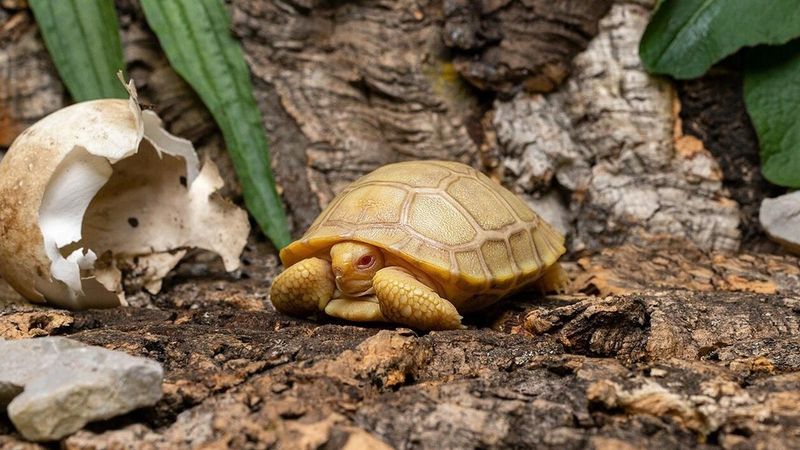
The albino tortoise is a rare and intriguing variant of the common tortoise, characterized by its white shell and pink eyes due to the absence of melanin.
This lack of pigment makes them more vulnerable to predators and environmental threats, necessitating protection in secure habitats. Found primarily in captivity, albino tortoises are popular in the exotic pet trade for their unique appearance.
Conservation efforts focus on protecting their natural habitats and educating the public about the importance of genetic diversity. Albino tortoises are a testament to the wonders of nature’s genetic variations.
Melanistic Parrot

The melanistic parrot is a striking variant of the typically vibrant parrot species, characterized by its dark plumage due to an excess of melanin. This rare coloration provides a unique twist on the classic parrot appearance.
Found in tropical regions, these parrots add a touch of mystery to the avian world, drawing interest from bird watchers and researchers.
Efforts to study and conserve their habitats are essential for understanding the genetic diversity and ecological roles of these birds. The presence of melanistic parrots highlights the adaptability and variety of avian life, enriching the biodiversity of their ecosystems.
Albino Crow
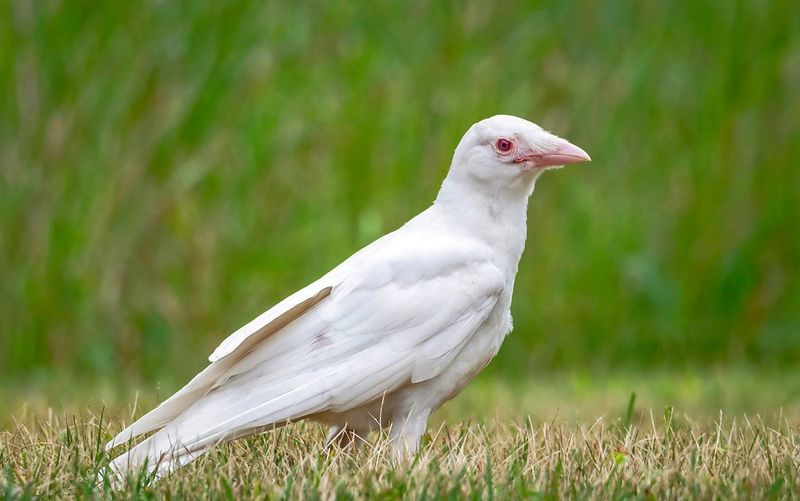
The albino crow is an extraordinary and rare sight in the avian world, distinguished by its pure white feathers and pink eyes due to the absence of melanin. This lack of pigment results from a genetic mutation.
Albino crows face challenges in the wild, as their visibility makes them vulnerable to predators and environmental threats.
Despite these challenges, their unique appearance captivates bird watchers and researchers. Conservation efforts focus on protecting their habitats and understanding the genetic diversity within crow populations. The albino crow is a testament to the wonders of nature’s genetic adaptation.
Melanistic Giraffe
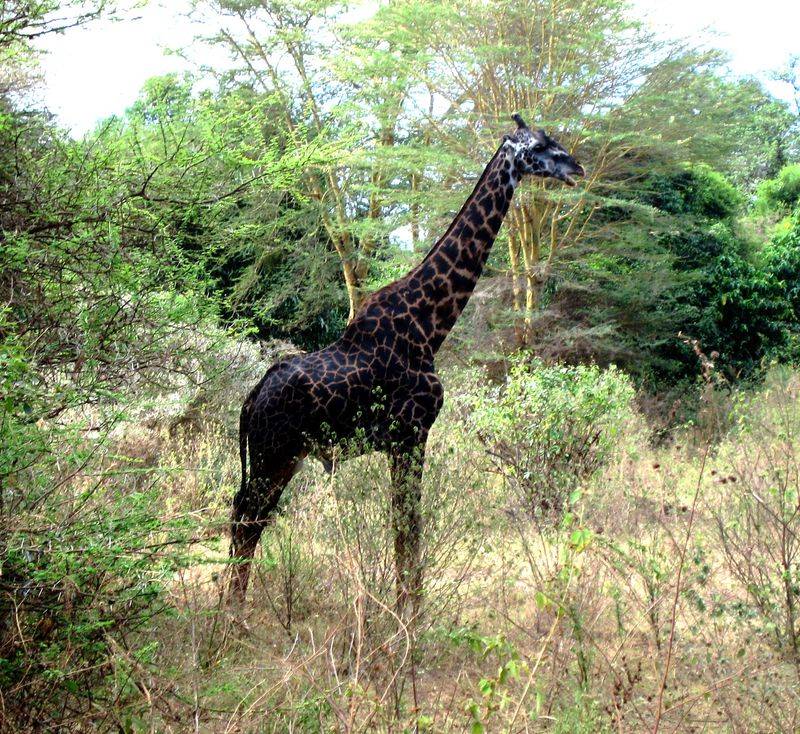
Melanistic giraffes are a striking anomaly in the animal kingdom. These towering creatures, usually known for their light tan and golden patches, sport a coat that’s deep brown to near black due to an excess of melanin. This rare pigmentation alteration offers them an unusual allure on the African plains. Standing against the golden grass, their dark silhouettes create a captivating contrast. While rare, these giraffes adapt seamlessly to their environment, their unique coloration offering a different layer of beauty. Spotting one feels like uncovering a hidden gem in the vast wilderness, where nature continues to surprise.

